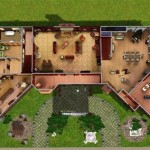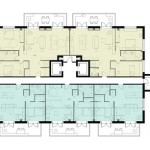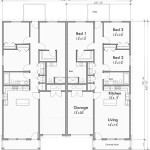How To Build Your Own House Plans
Building a house is a significant undertaking, and the foundation of any successful project lies in well-crafted house plans. While hiring an architect is a common approach, designing your own house plans can be a rewarding experience, offering complete control over the final product and potentially saving on design fees. This article outlines the steps involved in creating your own house plans.
1. Define Needs and Goals: The initial stage involves a thorough assessment of lifestyle requirements. Consider the number of bedrooms and bathrooms needed, desired living space sizes, preferred architectural style, and any special features such as a home office, workshop, or accessibility accommodations. Establishing a realistic budget is also crucial during this phase.
2. Site Analysis: Understanding the building site is essential for creating effective plans. Note the site's dimensions, topography, soil conditions, and orientation towards the sun. Local building codes and zoning regulations will also dictate setbacks, height restrictions, and permitted building materials, influencing the design possibilities.
3. Preliminary Sketches and Bubble Diagrams: Begin conceptualizing the layout by sketching rough floor plans, often called bubble diagrams. These diagrams represent rooms as circles or "bubbles," allowing experimentation with different spatial arrangements and traffic flow. This stage focuses on functionality and the relationship between spaces, rather than precise dimensions.
4. Refined Floor Plans: Once a satisfactory bubble diagram is achieved, translate it into a more detailed floor plan. Use graph paper or design software to draw accurate floor plans, incorporating specific room dimensions, door and window placements, and the location of plumbing fixtures and appliances. Consider furniture placement to ensure adequate space and comfortable circulation within rooms.
5. Elevation Drawings: Elevation drawings depict the exterior walls of the house from different viewpoints (front, back, sides). They show the height and design of the exterior walls, rooflines, windows, doors, and other exterior features, providing a visual representation of the house’s appearance.
6. Section Drawings: Section drawings, or cross-sections, are vertical cuts through the house, revealing the internal structure and detailing the relationship between different levels. They illustrate wall construction, roof framing, foundation details, and the height of ceilings and other structural elements crucial for understanding the building process.
7. Detail Drawings: Detail drawings provide close-up views of specific construction elements that require further clarification. These drawings can include details of window and door frames, kitchen cabinet layouts, staircase construction, or specific framing connections. They provide essential information for builders to accurately construct the house according to the design.
8. Utilize Design Software: While hand-drafting is possible, using computer-aided design (CAD) software greatly simplifies the design process. Many software options are available, ranging from free online tools to professional-grade programs. These tools offer pre-drawn components, automated dimensioning, and 3D visualization capabilities, making design modifications and revisions easier.
9. Incorporate Building Codes and Regulations: Throughout the design process, ensure compliance with all applicable building codes and zoning regulations. These codes dictate specific requirements for structural integrity, fire safety, energy efficiency, and accessibility. Consult local authorities to obtain the necessary permits and approvals before commencing construction.
10. Seek Professional Consultation (Optional): While designing your own plans is entirely possible, seeking professional consultation can be beneficial. A structural engineer can verify the structural soundness of the design, while an architect can provide feedback on design aesthetics and functionality. This step helps ensure that the plans are buildable and meet all necessary requirements.
11. Material Takeoffs and Cost Estimation: Once the plans are finalized, create a detailed list of all the materials required for construction. This includes everything from lumber and concrete to plumbing fixtures and electrical wiring. Using this list, obtain cost estimates from suppliers to develop a comprehensive budget for the project.
12. Plan Revisions and Refinements: Designing house plans is an iterative process. Be prepared to revise and refine the plans as needed throughout the design process. Review the plans carefully, considering all aspects of functionality, aesthetics, and budget. Making changes on paper is significantly easier and less expensive than making changes during construction.
13. Document Everything: Maintain comprehensive documentation throughout the design process. Keep records of all sketches, drawings, calculations, material lists, and cost estimates. This documentation will be invaluable during construction and for future renovations or modifications.
Creating your own house plans requires time, dedication, and attention to detail. By following these steps and utilizing the available resources, you can successfully design a home that reflects your unique needs and vision.

Designing My Own House

House Plans How To Design Your Home Plan

House Plans And Design

House Plans And Design

House Plans How To Design Your Home Plan

Floor Plan Creator And Designer Free Easy App

House Plans How To Design Your Home Plan

House Plans How To Design Your Home Plan

Vignette Design Bucket List 7 Build A House From Scratch

How To Design A House Live Home 3d








